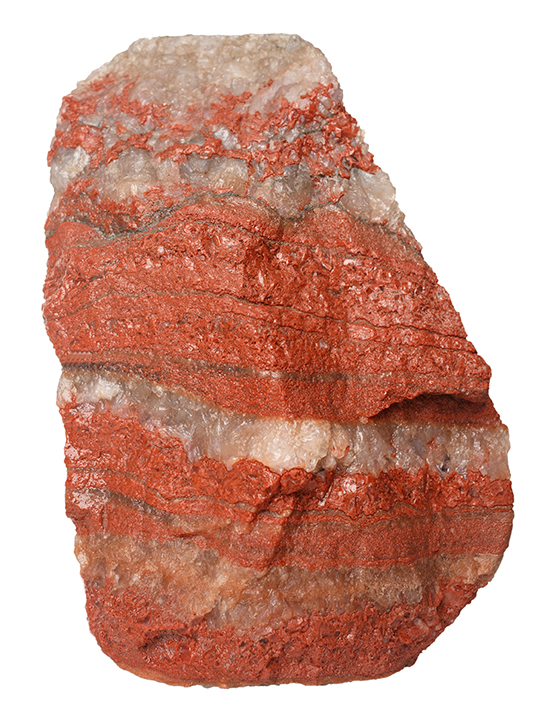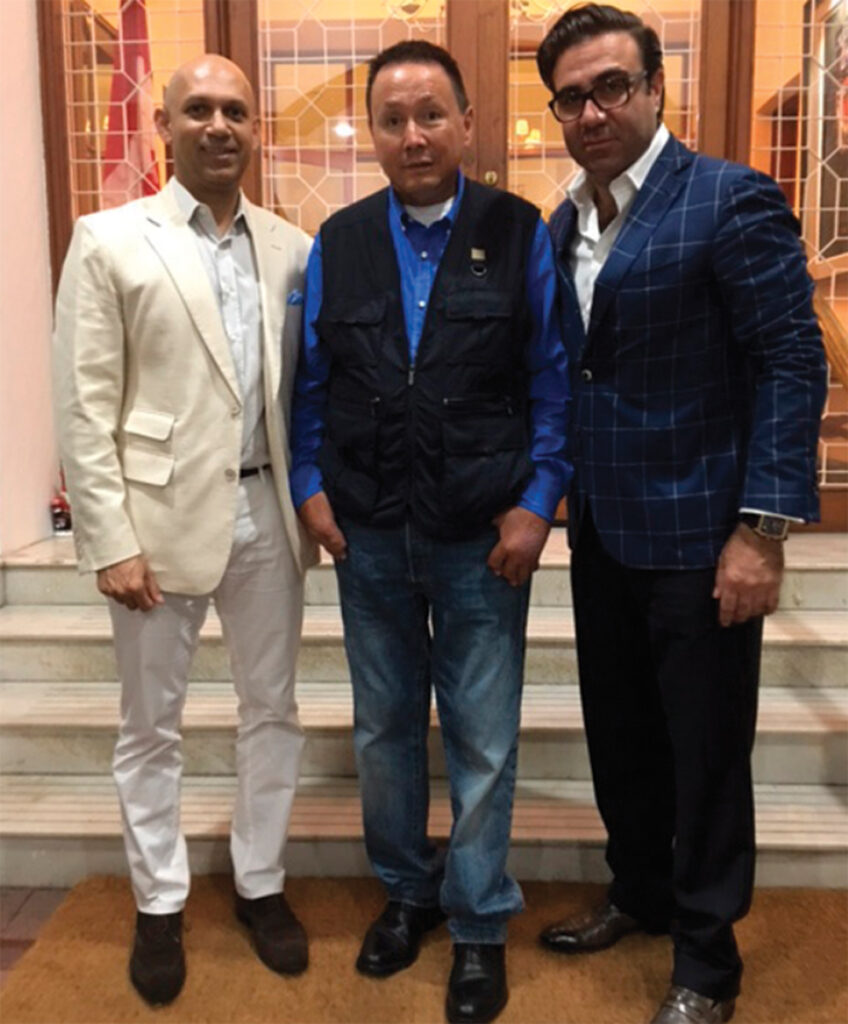Potash Potential
The Muskowekwan First Nation in Saskatchewan has partnered with a junior mining company on what could be a $3 billion potash mine. But will all the work pay off?

Over the last nine years, the Muskowekwan First Nation, 140 kilometres northeast of Regina, Sask., has been hatching a plan to create dozens of businesses, hundreds of jobs and an enormous amount of wealth.
Just as the Fort McKay First Nation in Alberta is surrounded by vast quantities of oil, Muskowekwan is surrounded by vast quantities of potash, which is used around the world to increase the yields of such important crops as rice, corn and soybeans. And just as Fort McKay has done, the people of Muskowekwan are hoping to turn that proximity to a natural resource into an economic engine for the community.
The First Nation has entered an agreement with Vancouver-based Encanto Potash Corp. to build what could become a $3-billion potash mine on Muskowekwan land. It would have an estimated mine life of 60 years and would transform life not only for the First Nation, but for the region. It’s far from a done deal and there are many hurdles yet to be overcome: The money to build it has yet to be raised, the price of potash remains at multi-year lows and there are challenges that would come after the mine opens, when an influx of money and workers inevitably leads to the stresses commonly associated with boom towns. But if it does succeed, and if the challenges are properly addressed, the Muskowekwan potash mine could drive the economy in the region for decades and lead to a renaissance for the First Nation.
“First and foremost we want to protect the land and people, and then we want to create employment,” says Chief Reginald Bellerose, who has led the Muskowekwan First Nation for the last 13 years. “We want training and employment and I don’t think that’s a bad thing.”
He sees the mine as an opportunity to lift his community out of its current situation, which like so many First Nations in this country is one of relatively low socio-economic indicators in education, health and employment.
“Child welfare is full of our kids, there’s poverty,” he says. “That’s not a solution for the future. I don’t plan for failure, but that’s what’s been imposed upon us. We’re trying to plan for success and people question, ‘What are you going to do when it happens?’ Well I know we’re going to do a much better job than Canada and Saskatchewan have done for us to this point. We can’t do any worse.”
Bellerose has won three elections in the nine years that the Muskowekwan First Nation – which has about 2,000 members, 700 on the reserve – has been negotiating with Encanto. He says he and the council are trying to lead the community on a path that would also allow them to be less reliant on the federal and provincial governments.

“The best way to do that is to generate your own source revenue,” he says. “You could chose to do that on a small scale, a medium scale, a large scale or a mega scale. We chose the mega scale.”
It’s been a long and winding road to get to this place, because building a mine on reserve land is exponentially more complicated even than getting one built on private or other Crown land. It begins with the ownership of the land, which on reserves is in the name of the Crown. There are no private property rights, so the federal government has to be involved in negotiations. The band had to go through two rounds of voting to secure property rights and mineral title. Extensive rounds of community consultation and negotiation lengthened the timelines.
Then there was the regulatory uncertainty to deal with. Provincial regulations generally don’t apply on reserves, and regulations regarding everything from electrical inspections to environmental assessments had to be modified to apply to the Muskowkewan potash mine. Bellerose says the legal and financial complexities that came with the project meant it was crucial that the band turn to outside experts to do some of the heavy lifting.
“I encourage other First Nations that are venturing on this kind of scale to hire incredible legal people who understand the Indian Act, who understand the land tenure,” he says. “You can’t take shortcuts on your legal team.”
He says the patchwork of applicable laws and regulations also makes it particularly hard to attract investment on reserve.
“There are no rules of the game,” he says. “Now, there’s a rule book so it becomes a project like any other. There’s a rule book for labour, there’s a rule book for safety and health, there’s a rule book for everything it takes to construct a project like this.” In the end, the band is only the third in the country to gain a measure of regulatory certainty by going through a process set out by the First Nations Commercial and Industrial Development Act, which provides a mechanism for provincial rules to apply to large-scale projects on First Nations’ land. The Muskowekwan band is also the first in Canada to have rights to the minerals under reserve land.
“These types of milestones don’t happen very often,” Bellerose says.
Complicated land ownership and confused regulatory issues are just the tip of the iceberg for the Muskowekwan potash mine. Gary Deathe, the director of corporate development at Encanto, says he has also seen a lingering doubt amongst the mining and financial communities that a project with a First Nation partner would see the light of day.

“When it started it was difficult to get, not just interest, but to get people not to be alarmed that it was a First Nation-partner project,” he says. “The thought was that they were going to be difficult to work with and that they’re going to pull out or change.”
There is also the price of potash, which has been consistently low for the last four years and is now hovering around US$220 per tonne. As recently as 2009, that spiked above US$800. Deathe says the price is also slowing the project.
“If we were back a few years ago, with $300 or $350 potash, this would be done and we’d be building it,” he says. For those seeking a bit of optimism, most projections have the price going up in the near term.
“People believe it’s going up in the next few years so now is the time to get involved,” Deathe says, “but we need some companies with foresight to do that.”
Despite the low price, Encanto has signed an offtake agreement with India’s national farming cooperative for a minimum of five million tonnes of potash per year for 20 years. The company hopes to get as much as 3.5 million tonnes of that from the Muskowekwan property, but is also in negotiations with other Saskatchewan First Nations looking at similar deals.
Deathe says the $3 billion figure for the mine is only one option. He says the company is considering a variety of mining techniques, which not only eliminate the need for large open pits and their accompanying environmental problems, but can also be built for far less in upfront capital expenditures, as little as $200 million.
“That’s one of the things we’d like to be able to tell the market, that we’ve decided to go forward, we could be in production in 12 to 18 months,” Deathe says. “Those are part of the conversations we’re in, rather than ask for $3 billion.”
The project is undergoing a number of studies right now. There are studies about environmental protections, transportation, power requirements and more. Bellerose hopes to have most of them completed in the next year or so.
“Some people are impatient, but all these studies need to take place,” he says. The precise location of the mine site also has yet to be determined.
Bellerose does express concern about the impact of rapid economic growth on the region. Generating billions of dollars of economic activity near a small community comes with risks. As has happened around other boom towns, such sudden wealth will bring social and economic upheaval as hundreds of workers arrive for the jobs. Supporting infrastructure becomes overtaxed. Bellerose recognizes this and is trying to address it head on.
“I don’t live in a fairytale world,” he says. “I know what can come with a boom, but you do your best to mitigate that through good planning.”
He says the community is working to get itself, its businesses and its people ready for the activity. The band has also developed a 30-year financial plan that outlines priorities for spending.
But he’ll take the challenges willingly, hoping to overcome them and to set an example that other First Nations might look to as they try to develop their own economies.
“We’re trying to promote that First Nations can get involved in business in a very big way,” he says. “First Nations have land. They have resources. We need to promote that we have a young labour force that needs some investment, and that as a result of that investment you could see a lot of skills developed in Western Canada.”

